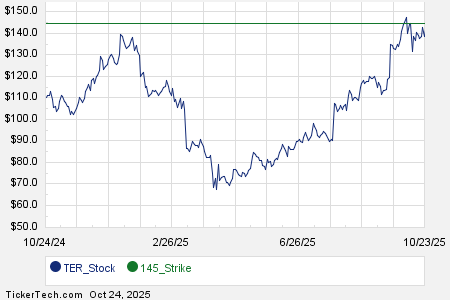# Crude Oil Prices Decline Amid OPEC+ Supply Concerns
WTI crude oil for June (CLM25) finished down -0.95 (-1.60%) on Friday, while June RBOB gasoline (RBM25) dropped by -0.0293 (-1.43%).
Market Overview: OPEC+ Meeting Impacts Prices
Crude oil and gasoline prices experienced modest declines on Friday as OPEC+ moved its meeting to discuss potential increases in crude production forward, fueling worries about a global supply glut. However, these losses were partially offset by a weaker dollar and an S&P 500 rally, achieving a one-month high, which indicates confidence in the economic outlook that supports energy demand.
OPEC+ Production Discussions
Crude prices faced downward pressure after OPEC+ scheduled a video conference for Saturday, instead of the originally planned Monday meeting, to discuss June production levels. Delegates indicated that the group is considering boosting production by 400,000 barrels per day (bpd) for June. This follows an increase of +411,000 bpd agreed upon for May.
Concerns about oversupply were heightened after a Reuters report on Wednesday highlighted Saudi Arabia’s willingness to withstand lower oil prices, raising fears of prolonged high production levels from OPEC+. Reports suggested that several OPEC+ members may advocate for faster oil output increases for a second consecutive month in June. Saudi Arabia could ramp up production to lower crude prices and penalize members exceeding their production limits, potentially flooding global markets with crude. The group will convene on May 5 to finalize the June output plan.
Economic Indicators Supporting Demand
Despite the concerns regarding supply, positive global economic news supports energy demand. US nonfarm payrolls rose by +177,000 in April, surpassing expectations of +138,000. Additionally, US factory orders in March increased by +4.3% month-over-month, marking the largest jump in eight months. In the Eurozone, the April S&P manufacturing PMI was revised upward to 49.0 from a previous figure of 48.7, and the March unemployment rate remained at a record low of 6.2%.
Global Sanctions and Their Impact
New sanctions on Russian crude may limit global oil supplies, supporting prices. US Senator Lindsey Graham reported that he has backing from 72 senators for a bill that would impose severe sanctions on Russia, including a steep 500% tariff on imports from countries purchasing Russian crude and prohibitions for US citizens on buying Russian sovereign debt.
US-Iran Nuclear Deal Talks
Reports indicate progress in US-Iran negotiations concerning Iran’s nuclear program, with both parties set to meet in Europe this week. Should an agreement be reached, the US might lift export restrictions on Iranian crude oil, potentially increasing supply and exerting additional downward pressure on prices.
Tankers and Inventory Levels
An increase in crude oil held worldwide on stationary tankers is also bearish for oil prices. Vortexa reported a +34% week-over-week rise in crude oil stored on tankers, reaching 90.73 million barrels as of April 25, the highest level in nine months.
Since April 3, prices have reflected a negative carryover from OPEC+’s announcement to boost May production by +411,000 bpd, more than the +138,000 bpd added in this month. The group aims to phase out a two-year production cut, restoring a total of 2.2 million bpd. Although initially planned to restore production between January and late 2025, it is now anticipated that the cuts may not be fully reversed until September 2026. OPEC’s April crude production fell by -200,000 bpd to 27.24 million bpd.
Chinese Demand and Sanctions Impact
Stronger demand from China, the world’s largest crude importer, continues to support oil prices. Reuters reported that Chinese crude imports in March soared to 12.1 million bpd, the highest level since August 2023.
Additively, US sanctions imposed in January on Russia’s oil industry remain influential. These measures targeted companies like Gazprom Neft and Surgutneftgas—responsible for about 970,000 bpd of Russian crude—while also affecting insurers and traders of tanker cargoes. As of March, Russian oil product exports reached a five-month high of 3.45 million bpd, while recent vessel tracking indicated a +40,000 bpd weekly increase in Russian crude exports, totaling 3.39 million bpd for the week ending April 27.
Inventory and Rig Count Updates
The latest EIA report on Wednesday indicated that US crude oil inventories as of April 25 were -6.6% below the seasonal five-year average, while gasoline inventories were -3.9% below, and distillate inventories stood at -11.9% below the five-year seasonal average. US crude oil production remained steady at 13.465 million bpd for the week and sits slightly below the record high of 13.631 million bpd from the week of December 6.
Baker Hughes reported a decrease in active US oil rigs, dropping by four to 479 for the week ending May 2. This figure remains above the 3.25-year low of 472 rigs recorded on January 24 but down from the five-year peak of 627 rigs seen in December 2022.
As of publication, Rich Asplund did not hold any positions in any securities mentioned in this article. All information herein is for informational purposes only. Please review the Barchart Disclosure Policy for more information.
More news from Barchart
The views expressed in this article belong solely to the author and do not necessarily represent the views of Nasdaq, Inc.






